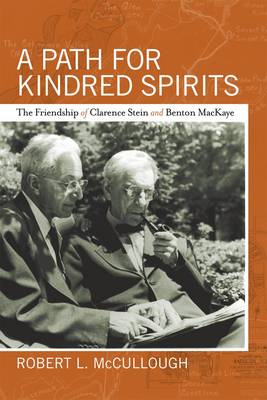Throughout history friendships between great thinkers have provided the basis for philosophical exchange. Such was the case with Clarence Stein and Benton MacKaye, conservationists and architects, who in the early twentieth century found their shared inspiration in nature. Despite different backgrounds, Stein and MacKaye's belief that the betterment of society lay in its connection to the natural world fueled their dialogue and resulted in their most ambitious projects - MacKaye's plan for the Appalachian Trail and Stein's plan for Radburn, New Jersey. In Radburn, Stein and fellow architect Henry Wright used "superblocks" and cul-de-sacs to create a personal, self-contained community in the midst of a larger, impersonal city setting. Similarly, MacKaye's Appalachian Trail allows people to easily access nature, blurring the line between the industrialized and natural worlds. Robert L. McCullough offers here a detailed account of Stein and MacKaye's personal struggles and public triumphs during several tumultuous decades in American history that encompassed both the Depression and World War II.
Using numerous primary resources, including MacKaye's hand-drawn maps of the American countryside and the pair's affectionate letters to each other, McCullough demonstrates Stein and MacKaye's painstaking commitment to their professional careers and their friendship. Arguing that their work would not be as well-rounded - or as well-received - if Stein and MacKaye had not supported and encouraged each other's projects, McCullough solidifies their legacy not only as great American visionaries, but also as caring friends.
- ISBN10 1930066937
- ISBN13 9781930066939
- Publish Date 15 July 2012
- Publish Status Transferred
- Out of Print 18 February 2022
- Publish Country US
- Imprint Center for American Places,US
- Format Hardcover
- Pages 160
- Language English
